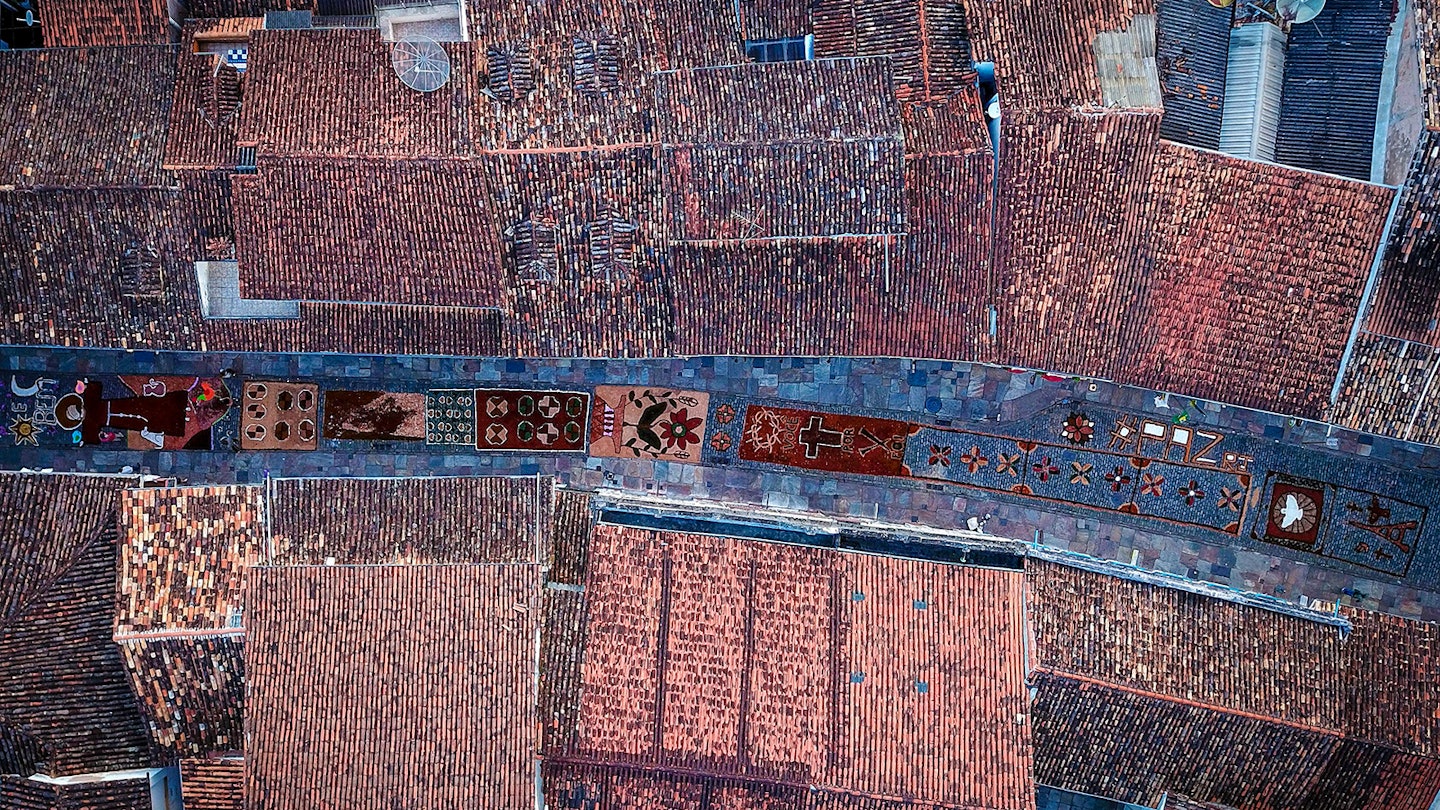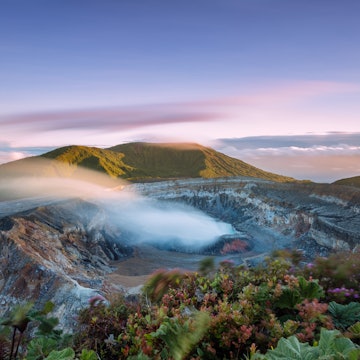
Semana Santa celebrations across Latin America and the Caribbean

Apr 15, 2019 • 4 min read

TOPSHOT - Aerial picture showing sawdust rugs, seen between tiled rooftops, decorating a street in the Brazilian historic city of Ouro Preto, Minas Gerais State, on April 1, 2018 before an Easter Sunday procession representing the resurrection of Christ. (Photo by DOUGLAS MAGNO / AFP) (Photo credit should read DOUGLAS MAGNO/AFP/Getty Images)
Semana Santa (Holy Week), with its colorful ceremonies and pageantry, is one of the holiest weeks in the Catholic religion and most widely celebrated holidays throughout Latin America and the Caribbean.
The Holy Week is highlighted with lengthy processions and acts of penance. Though common themes are found throughout, every country brings its own tradition to the festivities.

Make literal street art in Ouro Preto
Brazil is largely Roman Catholic, so the Semana Santa is a widespread event across the country. However, Ouro Preto’s celebrations are some of Brazil’s most elaborate, as residents pave the city streets with colorful art.
Late on the night before Easter Sunday, people take to the streets with colored sawdust and other natural materials to create elaborate designs on the cobblestone roads winding through the city, marking the path of the Easter procession the next day.
Stemming from the Portuguese tradition of lining procession routes with leaves and flowers, these tapetes coloridos (colored carpets) vary in size, color and design, but all are equally temporary. When the parade passes, they are swept away by the festivities until the next year.
If you want to partake in making designs, drink that extra cup of coffee – “painting” doesn’t really get underway until after midnight.
– Bailey Freeman, Destination Editor

Try chiverre in San José
Semana Santa in San José is all about enjoying the sun and hot weather. If you happen to be around the city during this time of the year, there are a few things you shouldn't miss.
Holy Week celebrations feature plenty of food, and San José's features a unique regional specialty: chiverre. The watermelon sized squash is only available during Semana Santa and is used as filling for everything from empanadas to pies and sweet tarts.
The tradition lies in the preparation, as local families come together to prepare and indulge in the treats alongside a good cup of Tarrazú or Dota coffee. If you can’t join a family, visitors can find chiverre desserts at the Mercado Central in downtown San José or at any local fair during the week.
Even if you are not a religious person, the Semana Santa parades are must-see events in San José. Although most of the neighborhoods have their own parade, the most popular one takes place on Avenida Segunda in downtown San José. The processions are typically scheduled for the Friday of Holy Week and start at 3pm.
– Maria Esther Abissi, Lonely Planet writer

See a full-scale reenactment in Mexico City
While most Mexico City residents head to the beach for Semana Santa, pious people from around the country flock in for the Mexico’s most well-known celebration.
One of the oldest and largest Semana Santa celebrations in Mexico takes place in the little known neighborhood of Iztapalapa. Located in the southeastern area of Mexico City, people are chosen for the Passion of the Christ reenactment up to a year beforehand. This year will be the 176th reenactment, and the event is so famous that it’s actually live-streamed on national television.
The roles of Jesus, Mary and the Roman Soldiers are highly sought after and taken very seriously; actors practice for months before the big day, and significant time and money are spent on everyone’s costumes.
On Viernes Santo (Good Friday), thousands of people line the streets to watch. The procession begins at Parque Cuitláhuac, then moves through the center of Iztapalapa, and culminates at Parque Nacional Cerro de la Estrella.
– Laura Bronner, Lonely Planet writer

Hit the beach for Easter in Puerto Rico
In Puerto Rico, the entire Holy Week is celebrated in style, beginning with Palm Sunday processions when worshippers parade through the city streets with tree branches in tow. On Good Friday and Easter Sunday, expect to find most businesses closed with the exception of the Old San Juan forts, El Yunque Rainforest and the island beaches – where most locals choose to spend the holiday. Crowds arrive early Friday morning and by midday, beaches across Puerto Rico packed with groups equipped for a day on the sand that includes cookouts, music, sports and a little relaxation. The festivities continue well into the evening hours and through the weekend.
Those attending services can expect traditional parades depicting the carrying of the cross and the Crucifixion on Viernes Santo (Good Friday) and midnight mass on Saturday to adorn altars with flowers and candles.
Easter Sunday processions draw throngs of worshippers and onlookers. The streets of Old San Juan are closed to traffic as parades wind through the old town, stopping at each of the seven churches and chapels in the historical city.
– Mikol Hoffman, Lonely Planet writer
https://shop.lonelyplanet.com/products/lonely-planet-guide-to-the-world-2















